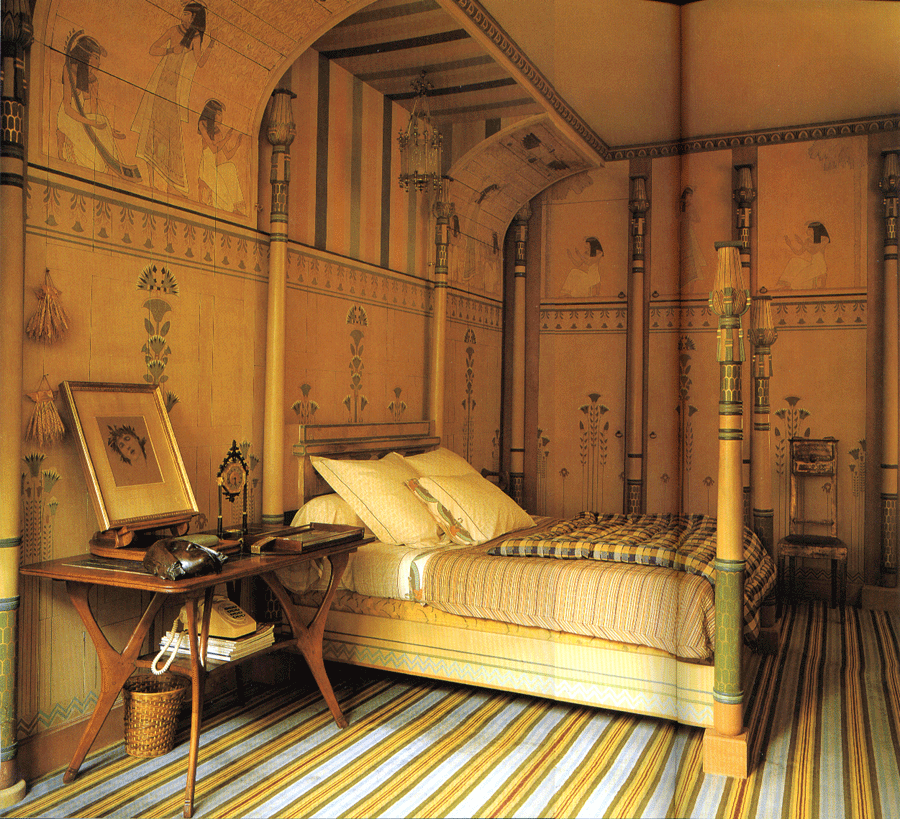Ancient Egypt brings us out of the pre-historic period and into a more civilized and evolved time period. During this time period, food and shelter were much more secured than they were in the pre-historic times, and because of this the people of ancient Egypt had more energy to pour into complex inventions and the arts, including interior design. And thanks to the Nile River, ancient Egypt was able to grow into one of the main civilizations of its day. The Nile provided transportation and allowed for an easy way to import many materials that Egypt did not have that was necessary to the construction of their buildings. Many types of woods such as Ash, Ebony, and Boxwood were imported from Lebanon. Because wood had to be imported, stone was the more common building material in Egypt.
The climate in Egypt greatly influenced their design aesthetic. There was minimal rainfall, intense sunlight, and little variation in temperature. Thus, many of the buildings had flat roofs (as no steep was needed to have rain run off) and outdoor/open air spaces were common. Another influence on Egyptian design was religion. The Egyptians believed in a life after death, and because of this erected many monuments and objects in burial. Much of the design was also influenced by the god of that specific region. Lastly, ones social class influenced the structure and design of their house. While a craftsman's home would have been small, containing a reception, hall with windows, bedroom, and a kitchen, a country villa owned by those in high society would have been much more grand and have included areas such as an anointing room and rooms for servants. The following picture is an example of what a country villa of the wealthy might have looked like in Ancient Egypt.
This image shows an ancient Egyptian painting that would have appeared on a wall. The painting most likely was representative or symbolic of the specific religion of the creator of the art. These sort of images were very popular in Egyptian design.
The Egyptians were the first people to invent a piece of furniture that could be easily transported. The above image shows an Egyptian folding chair or stool. This stool could be easily carried around or stowed away when not needed.
Modern Application
This bedroom is an example of a modern day use of ancient Egyptian design. The use of paintings of figures and symbols on the walls are similar to those found on the walls in ancient Egypt. The colors used in this room are also similar to the color pallet we see used in ancient egypt.

This is a folding stool created by a dutch designer in the late 1950's. He created it to resemble an Egyptian stool but in a modern way.

This home is inspired by the ancient Egyptian pyramids that were used as monument to bury the deceased.
Peer Review:
I reviewed Nichole's blog and I thought that she did a great job explaining the contraction and building materials of this time period. I also really liked the modern application picture she shared of the art deco interior because it was clearly Egyptian inspired but it was not exactly the same as Egyptian design.
The second blog I looked at was Paige S. One thing that really caught my eye was the picture she shared of the ruins of the Great Hypostyle Hall. The images really showed how massive the columns were and captured the great details that were carved into each column.



No comments:
Post a Comment